
23.04.2017
By Diego Del Valle Ríos, Lima, Peru
April 19, 2017 – April 23, 2017
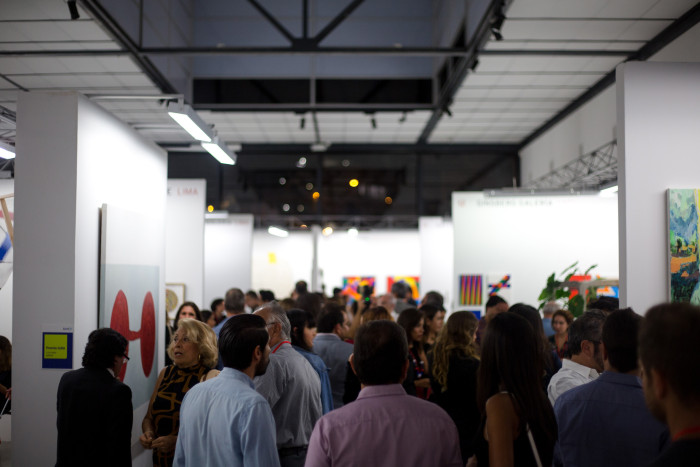
Terremoto Reports discusses on the spot the dynamics occurring in and around the most important Art Fairs of the Américas. Through interviews with some of its most relevant actors, we seek to make visible the conversations succeeding from within.
Diego Costa Peuser
Director of PArC Lima, Peru
www.parc.com.pe
Terremoto: How does PArC emerge? What has been the impact of PArC on a market like that of Peru?
Diego Costa Peuser: PArC was born five years ago; this is its fifth edition. Peru needed a contemporary art fair. There was Lima Photo, that has 7 years now, and the market was asking for a contemporary art fair to align with the presence of fairs in Latin America. I believe that each country needs a fair as a platform to promote artists and the local artistic movement: hence the theme of PArC. I also have a magazine called Arte al Día, it has 38 years of life. I’ve been living in USA, for 20 years now. I started participating in fairs in 1984 in ARCO with a stand of this magazine, on the other side of the counter (laugh), so I know a fair from the inside. I know the need for a fair in each country, and I know the importance we give, in terms of visibility, to the market and to the local and international artistic production.
T: How would you describe the region in terms of the market and the impact that PARC has had on it?
D.C.P.: It is progressing every time. Peru is in a good moment of its artistic production, has a lot of visibility, many good artists, which are having transcendence outside, at institutional level, at Tate level, at Moma level: there is very good presence. I think the fair has impacted on this at a good time, has concentrated this energy, is leading these artists towards more visibility. When you organize the fair, you work a lot on the content, but also on having international collectors coming to visit everything, to visit Peru as a country.
T: What are the challenges PArC and the art market in the South of the continent face?
D.C.P.: We had two very hard years, we are living through a very hard economy in Latin America. Brazil with its political and corruption problems has sprinkled all the countries; it is a power so it drags us all. The great challenge of PAr is to continue looking for projects that are truly original, making the fair become better and have more content to meet the needs of the Peruvian viewer.
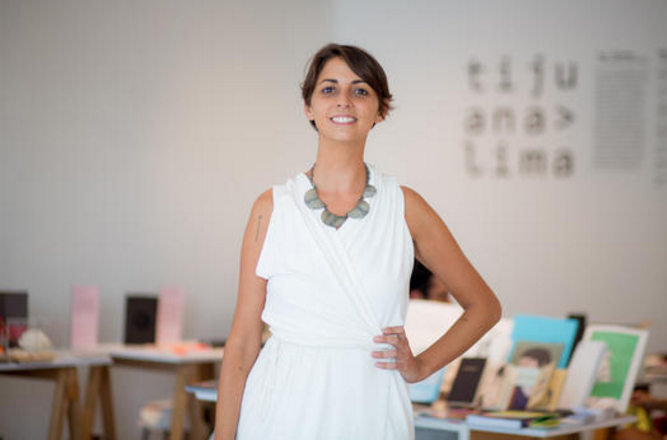
Ana Luisa Fonseca
Directora de Tijuana
www.cargocollective.com/tijuana
https://www.facebook.com/edicoestijuana
Terremoto: Tell us about Tijuana and its relationship with Lima projects for this edition of PArC.
Ana Luisa Fonseca: Tijuana was inaugurated in 2007 as a project of the gallery Vermelho (Sao Pãulo, Brazil) to be an exhibition space for artist books. Two years later, in 2009, we organized the first edition of Tijuana Fair. At that time Brazil still did not have a scene of independent publishers, but it did of artists who self-published themselves but had no place to show their books. We sensed the responsibility of working both as an exhibition space and as a fair, and dedicate ourselves to the production that remains in the margin, in the “border”. That’s why the name Tijuana.
After seven years since the first edition of Feria Tijuana de Arte Impresa, we had already significantly increased in a number of publishers, space and mobilization of the publishing sector to a national and international level. We then decided to organize editions in other cities in Latin America. Moving the fair and organizing it in other contexts brought us closer to local publishers that would be difficult to contact if we were not there. PArC invited us last year to collaborate, for instance, allows us to now know the independent publishing production of Peru more in depth.
T: From your point of view, what is the importance of integrating the editorial medium – meaning an artist book, object book, comic, magazine, theoretical text, etc. – into an art fair? In other words, what does the editorial medium contribute to the art market?
A.L.F.: The artist book has a spirit of resistance by essence. Since the 60s / 70s, when the first boom of that production existed, the attitude of producing books was always to free itself. That context, obviously, more for political reasons, dictatorships that did not allow the free expression where, therefore, the book became a keeper of secrets, forbidden ideas or portable works, that could be hidden with ease. Today the motives are no longer the same, but the book is still a format to get rid of institutions. Publishers that call themselves “independent” publish what they believe, without waiting for the validation or authorization of a boss or sponsor. An example are the fanzines or projects that can often be done at home. On the other hand, there are few bookstores and specialized distributors such as Terremoto or Motto, few galleries that dedicate themselves to opening an adequate space for exhibition and commercialization of books. What happens then, is that the fairs become very convenient for the artist who wants to sell him/herself, and to continue with the “independent” movement, which I particularly prefer to call “autonomous.” In addition, in the context of the Contemporary Art fairs you have the opportunity to conquer collectors not only of art but also of books, and in this way to add the publishing production to collections that will make them last longer and even include it in exhibitions, in their libraries, etc.
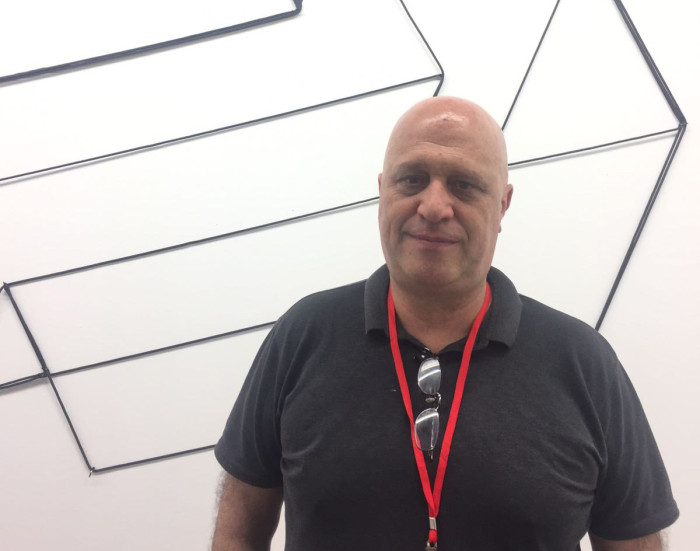
Eduardo Brandão
Galeria Vermelho, São Paulo, Brazil
www.galeriavermelho.com.br
Terremoto: Could you talk about Vermelho, his link with Peru, in order to relate the market to his artistic program?
Eduardo Brandão: The gallery is now 14 years old, it has allowed us to move through Latin America. We were always a little isolated, I think because of the language and the geographical characteristics. Having more and more Peruvians, Colombians, Argentinian, Uruguayan mainly in São Paulo, whether it is for business or for the universities, I began to notice that we needed to integrate Latin America to our program, which made a lot of sense. Not to think only in São Paulo, Brazil, but in Latin America. São Paulo is Latin America. I am 59, when I started school at the beginning we spoke French, then it changed to English, today the children have to learn English and Spanish. We did not even think about that before.
To bring from there to here and take it from here to there. Europe does this already constantly, through magazines, the TV, everything. It’s harder here. Museums, curators do the same. The importance of Peru is equal to that of Argentina, Colombia, Mexico, Venezuela. Contemporary art is very different, that’s why it is a force that brings us together, to know each other.
T: Is this your first time participating?
E.B.: No, we’ve been involved since PArC started five years ago. The fair has not changed much but the collectors had. The first year, the international collectors did not know us, and they had a very little desire to enter, to ask. That changed, now people already know who we are, they know us already.
T: What do you think are the challenges of the Latin American art market?
E.B.: Fidelity. I have collectors from here, from Colombia, from Venezuela, from Argentina who are still buying. Whenever we have a new artist they always buy us. They are very faithful. We’ve been coming here for five years; in the case of Bogotá, ten years. I still sell to collectors who buy me every year. In Colombia, there are those who bought me three different stages of the same artist. I bring works so they see that the artist is still producing, so they know what she/he is doing now, even if the market changes. That is the biggest challenge: achieve the loyalty of the Latin American collectors.
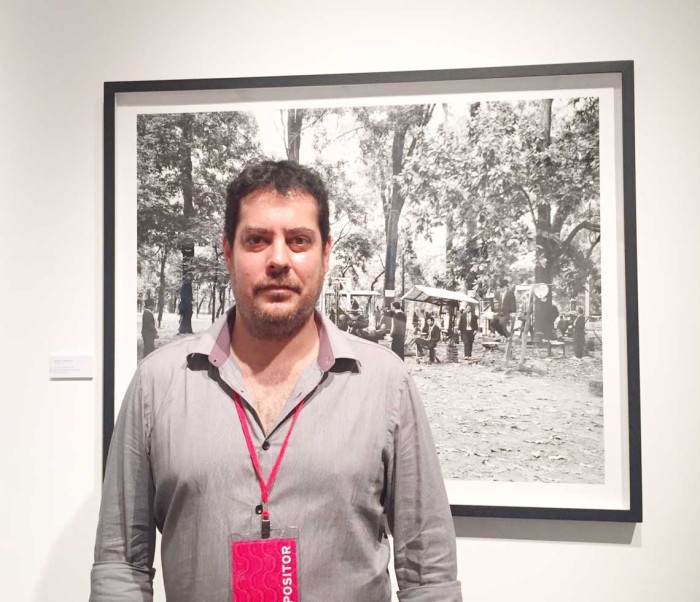
Carlo Trivelli
Galería el Ojo Ajeno, Lima, Peru
www.galeriaelojoajeno.pe
www.facebook.com/galeriaelojoajeno
Terremoto: How does Galería El Ojo Ajeno begin? What is its relationship with the market, from PArC?
Carlo Trivelli: Centro de imagen (before Centro de la fotografía) is founded in 2000, and they open Galería El Ojo Ajeno to have a space to show photography. Centro de la imagen’s being an art school, it was very important to have a space where artistic photo could be presented that could serve to open up the market; at that time very few galleries exhibited photographers, there were still lags in the discussion about whether photography was art or not, or was the younger sister of painting; and also as a visual training space for the students themselves. In 2010, began Lima Photo, in which Centro de la Imagen is a partner. It is an interesting moment because, although almost all the commercial galleries had a photographer among their represented artists, photography was not selling much. Many of us thought it was crazy, that a photography fair was not going to work. And it worked wonderfully. Sales went very well. In fact, it coincided with a boom in the Peruvian economy in 2010. During the government of Alan García, the last three years, Peru had a growth due to circumstances that had to do with the prices of minerals abroad and the Chinese growth, and we had growth between 8 and 10% per year. It was an economic paradise in many ways. And after three years of fair, the idea of making the contemporary art fair was necessary. The process is usually the reverse, you do a contemporary art fair and then an specialized fair appears. Here it was the other way around.
T: What are the challenges of the Latin American or Peruvian art market?
C.T.: The circuit of contemporary art focuses on the traditional Lima or modern Lima, which is from the center of the city to the south… is a small part of the city of 9 millions inhabitants. Even in that space where some new galleries have arrived due to that economic boom evoked earlier, the galleries still have little presence in the market. Many interior designers are intermediaries who buy directly from the artist’s studio, which undermines the mediator function of the galleries. The other thing is that the art system in Peru is quite weak. You have basically three museums that have collections of contemporary art: MAC, where we are now, MALI, and Museo de Arte de San Marcos. The only space with a policy of acquisitions is MALI, so you have a single voice to establish artistic value… there is practically no art criticism in the medias. Those things that give value to the works and that allow the market to develop are lacking. There is a need to institutionalize. I know that the galleries want to strengthen their association of galleries in order to work in this direction: promoting collecting, trying to make the rules clearer to avoid these double pricing standards… Those are the immediate challenges. On the side of creation, the internationalization of artists, I believe that things are going well, and in that sense the fairs have been very important.
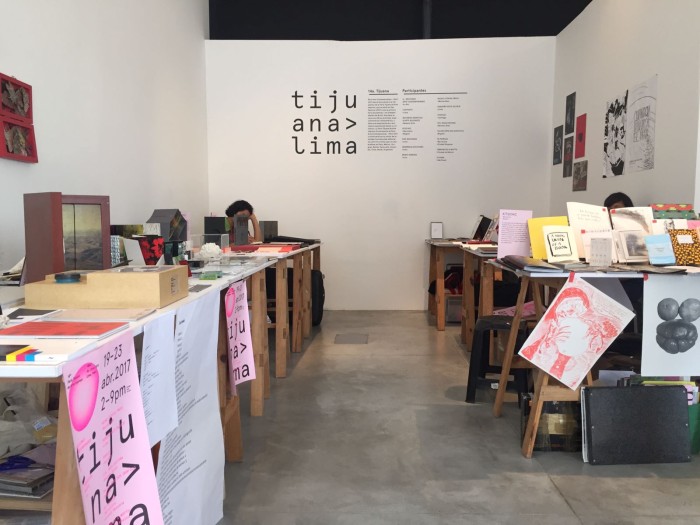
Liatna Rodríguez López
El Apartamento, La Habana, Cuba
www.artapartamento.com
Terremoto: Introduce us El Apartamento. How is it that it is linked from Havana to the Peruvian market, why PArC?
Liatna Rodríguez López: The gallery is very young, barely two years. It is an independent gallery, it focuses mainly on the work with emerging artists, young artists, although we have some artists already consolidated. But fundamentally we work with artists who stay a bit as siders of what is officially displayed within the most visible spaces of the city.
In Cuba there is a problem with the art market which is that there is no national market. The art in Cuba lives only of a foreign collection, mainly North American, with some influences of Latin America and Europe. As an exhibition space, we’ve been interested in trying to find other niches of market that we can explore and not to live constantly at the expense of a very punctual collection that is the North American. It is what we have been trying to do in this period, for example we tried in Colombia, now in Peru, and so in other spaces.
T: In Peru, what have you found attractive in relation to the market?
L.R.L.: This is our first time here. What I think is that, with two fairs, it is too much supply and very little demand. It is a market of important collectors, collectors recognized in Latin America, but I consider that they are very reduced.
T: What do you think are the challenges the Latin American art market faces?
L.R.L.: It is difficult to answer because contexts vary enormously. Yesterday someone told me that in Argentina there are 50 galleries, and I asked how they survive, because it is a small market. 50 galleries of contemporary art. Right now, to come to the fair, most of the Argentine galleries came with government support. It is more or less the same situation we have in Cuba. This has grown too much and I think it is the same thing that we are suffering now at the fair. I think it’s the same thing that happens now with Basel, which is doing programs like Basel City, trying to find other ways, because I do believe that fairs have reached a limit. I do not know how we are going to continue walking down this dynamic, getting out is no problem.
If other countries in Latin America have reduced markets because of economic problems – class differences, money is concentrated in a very small sector – in Cuba there are none. The conditions are completely different.
Diego del Valle Ríos is Terremoto’s Managing Editor.
Comments
There are no coments available.